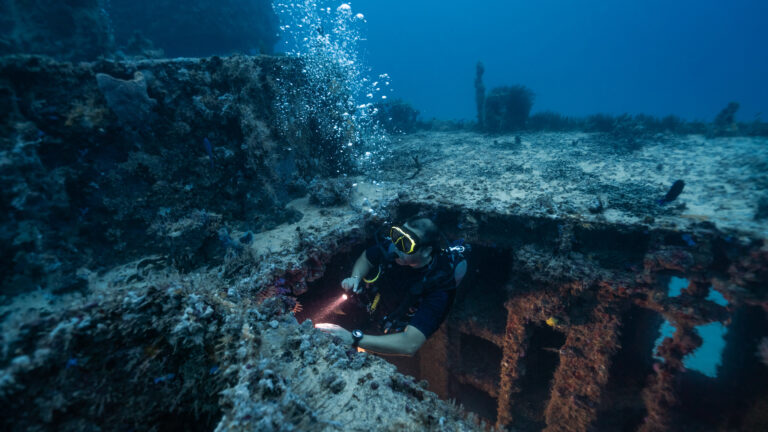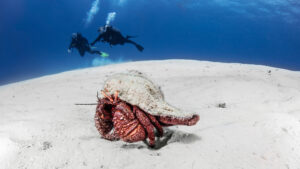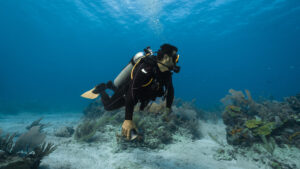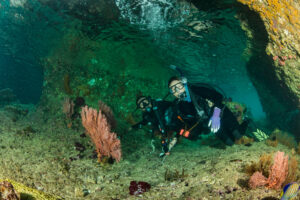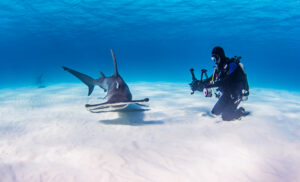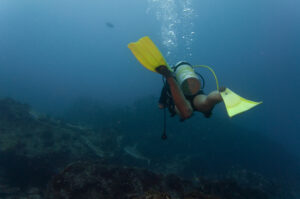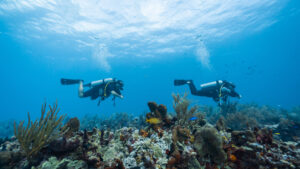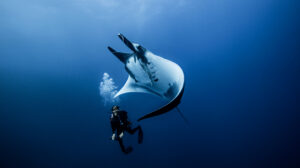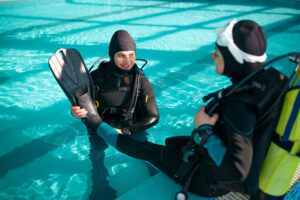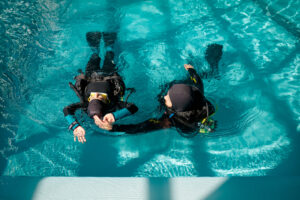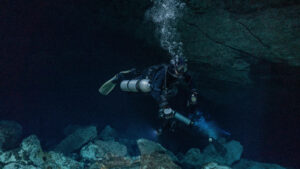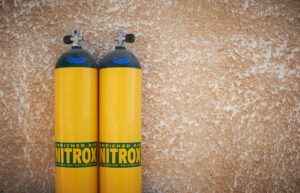What is a Monofin?
A monofin is a single, large fin used by swimmers to enhance their propulsion through water. Unlike traditional fins, which are worn on each foot separately, a monofin is designed to bind both feet together, creating a single, unified extension of the body. This design allows for more efficient and powerful movements, mimicking the motion of marine animals like dolphins and whales. Monofins are commonly used in sports such as fin swimming and free diving, where speed and streamlined movement are crucial. They are also popular in recreational swimming, particularly in mermaiding, where swimmers wear mermaid tails equipped with monofins.
Historical Development
The concept of the monofin has roots in the early 20th century, although it was not until the latter half of the century that it began to take shape as we know it today. Early pioneers in underwater sports and exploration sought ways to improve human swimming efficiency, drawing inspiration from the natural world. The initial designs were rudimentary, often involving modifications to existing dual-fin systems to create a unified fin.
In the 1970s, the development of the modern monofin took a significant leap forward with the advent of more advanced materials and a better understanding of hydrodynamics. Inventors and competitive swimmers worked together to refine the design, resulting in a more flexible and efficient monofin. Key milestones included the introduction of materials like fiberglass and carbon fiber, which offered greater strength and flexibility compared to traditional rubber.
By the 1980s and 1990s, monofins had become a staple in competitive fin swimming and free diving. Athletes using monofins began setting new records, demonstrating the potential of this innovative equipment. The evolution of the monofin continued into the 21st century, with ongoing improvements in design and materials, making them more accessible to a broader range of users, including recreational swimmers and mermaiding enthusiasts.
Design and Features
A typical monofin consists of a large blade attached to a foot pocket or binding system that secures both feet together. The blade is usually made from materials like fiberglass, carbon fiber, or plastic, chosen for their strength, flexibility, and durability. The foot pockets are designed to fit snugly, ensuring a secure and comfortable fit that allows for efficient transfer of leg power to the fin.
The design of the blade varies depending on its intended use. Competitive monofins often feature a wide, streamlined blade with a slight curvature, optimized for speed and efficiency in the water. These fins are typically stiffer, providing greater propulsion but requiring more leg strength and technique. Recreational monofins, on the other hand, may have more flexible blades that offer a balance between performance and ease of use, making them suitable for a wider range of users, including beginners and children.
Monofins used in mermaiding are often designed to resemble a mermaid’s tail, with colorful, decorative elements that enhance their visual appeal. These fins combine aesthetics with functionality, allowing mermaids to swim gracefully while maintaining effective propulsion. Despite their playful appearance, mermaid monofins are constructed with the same attention to performance and safety as other types of monofins.
Biomechanics of Monofin Swimming
Swimming with a monofin involves a unique set of movements that differ significantly from traditional fin swimming. The monofin technique relies on a powerful undulating motion that originates from the core and hips, traveling down through the legs to the fin. This wave-like movement, known as the dolphin kick, allows swimmers to achieve greater speed and efficiency by reducing drag and maximizing propulsion.
One of the key benefits of monofin swimming is the ability to generate more force with each kick. The large surface area of the fin displaces more water, providing a stronger push compared to individual fins. This results in faster speeds and improved maneuverability, which are particularly advantageous in competitive settings. However, mastering the monofin technique requires practice and conditioning, as it demands greater core strength and flexibility.
The biomechanics of monofin swimming also offer physiological benefits. The full-body motion engages multiple muscle groups, providing a comprehensive workout that enhances overall strength and endurance. Additionally, the streamlined position reduces strain on the lower back and legs, minimizing the risk of injuries commonly associated with traditional swimming techniques. Despite these advantages, swimmers must be mindful of the increased demand on their cardiovascular system and take appropriate measures to ensure safety and prevent overexertion.
Monofin in Competitive Sports
The monofin plays a pivotal role in several competitive sports, most notably fin swimming and underwater orienteering. Fin swimming, a sport governed by the International Underwater Sports Federation (CMAS), involves racing underwater using fins, snorkels, and other specialized equipment. Monofins are the preferred choice for many fin swimmers due to their superior speed and efficiency. Athletes using monofins have set numerous world records, showcasing the fin’s capabilities in enhancing performance.
Underwater orienteering, another sport that incorporates monofins, requires athletes to navigate a predetermined underwater course using a compass and other navigational tools. The monofin’s ability to cover large distances quickly and with minimal effort makes it an invaluable asset in these competitions. The regulations for monofin use in these sports are stringent, ensuring fair competition and the safety of participants. Competitors must adhere to specific guidelines regarding the size, shape, and materials of their fins, as well as their swimming techniques.
The popularity of monofins in competitive sports has led to the establishment of dedicated training programs and facilities. Athletes undergo rigorous training to perfect their monofin techniques, focusing on strength, flexibility, and breath control. The competitive environment fosters innovation and continuous improvement in monofin design, driving the development of more advanced and efficient models. As a result, the sport continues to evolve, with athletes pushing the boundaries of what is possible with monofin technology.
Training and Safety Considerations
Training with a monofin requires a specialized approach that differs from traditional swimming techniques. Swimmers must develop a strong core and flexible hips to execute the undulating dolphin kick effectively. Strength training exercises, such as planks, leg lifts, and core rotations, are essential components of a monofin training regimen. Additionally, flexibility exercises targeting the hips, lower back, and legs help swimmers achieve the necessary range of motion for efficient monofin swimming.
Safety is a paramount concern when using a monofin, particularly for beginners. The increased propulsion and speed can be overwhelming for those unaccustomed to the technique, leading to potential accidents or injuries. It is crucial for new users to receive proper instruction and supervision when first learning to swim with a monofin. Instructors should emphasize the importance of proper form, gradual progression, and regular breaks to prevent fatigue and overexertion.
Experienced monofin swimmers must also take precautions to ensure their safety. Regular equipment checks are necessary to identify any signs of wear or damage that could compromise performance or safety. Swimmers should also be aware of their physical limits and avoid pushing themselves too hard, especially in open water or competitive settings. Proper hydration and nutrition are essential to maintain energy levels and prevent cramps or other issues during extended swimming sessions.
Cultural and Recreational Impact
Beyond competitive sports, monofins have made a significant impact on recreational swimming and popular culture. One of the most notable recreational uses of monofins is in mermaiding, where swimmers don mermaid tails equipped with monofins to emulate the mythical creatures. This activity has gained widespread popularity, with mermaiding schools, clubs, and events emerging around the world. Enthusiasts of all ages participate in mermaiding, enjoying the unique experience of swimming like a mermaid and the sense of community it fosters.
Monofins have also influenced popular culture, appearing in films, television shows, and photography. Their visually striking design and the graceful movements they enable have made them a favorite in underwater cinematography and performances. Monofins are frequently used in underwater scenes to depict mermaids, sea creatures, and other aquatic characters, adding a touch of realism and magic to the visuals.
The social aspect of monofin use extends beyond mermaiding. Communities of monofin enthusiasts often gather to share their experiences, techniques, and equipment recommendations. These gatherings provide a platform for swimmers to connect, learn from each other, and celebrate their shared passion for monofin swimming. The recreational use of monofins has also led to the development of new products and accessories, catering to the diverse needs and preferences of users.
Key Takeaways
The monofin has revolutionized the way people swim, offering unique advantages in both competitive sports and recreational activities. Its streamlined design and efficient propulsion make it a valuable tool for athletes seeking to enhance their performance and for enthusiasts looking to experience the joy of swimming like a marine creature. As the monofin continues to evolve, its impact on swimming techniques and underwater exploration is likely to grow, further cementing its place in the world of aquatic sports and recreation.

